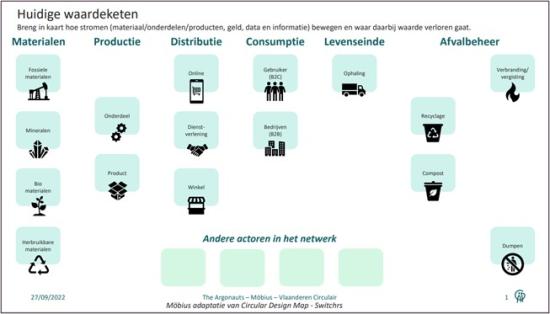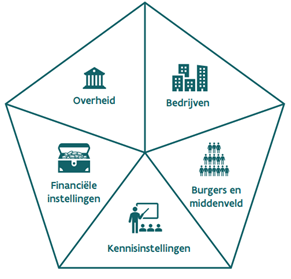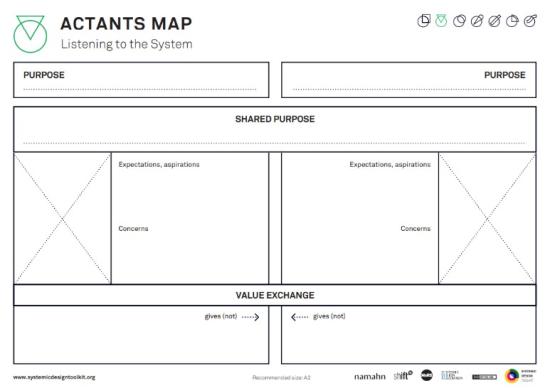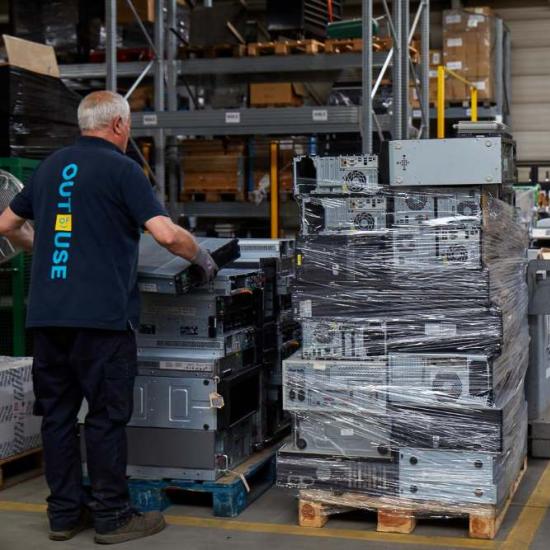How do other companies find partners who they can work with to actually make progress in realising their circular projects? This is one of the questions we received after last month’s SHIFT question "What would you like to learn from another company?". In this blog, we will check this out and outline the different steps to give you the best chances of finding relevant and dedicated partners who want to realise a circular project with you.
In short, you have to go through four phases:
- Visualise your current value chain.
- Who are the stakeholders in your circular project?
- What are the interrelationships between those stakeholders?
- How can you involve the desired stakeholders in your project: how can you motivate potential partners and build a relationship of trust so they will engage with you?
1. Visualise your current value chain
In the first step, you write down your current value chain, going over all the stages of your product, starting from material use to end-of-life and waste management. You could use one of the templates below to indicate the links between the different stages in your value chain, or use The value chain mapping tool or any other method that suits you. You can then add your circular project or idea by making new connections needed for the implementation. Make sure to close the circle and consider end-of-life and possible waste management of the materials released when the product is discarded.
You may also want to consider the value of your product at each stage: where are you creating additional value, where are you losing value and how can you avoid it? It may even bring you new circular ideas for value retention of your product.
Once the connections are made, you will have a clear picture of the new or additional material or product flows in your value chain for a more circular product. Based on this, you can define possible stakeholders in the next step.
2. Who are the stakeholders of your circular project?
|
|
For your circular project, go over the different segments in the chain from the previous step and try to name stakeholders for each of these segments. To define stakeholders and initially keep the spectrum as broad as possible, you can use the social pentagon. This pentagon is a guide that will make you think about possible partners in the government, business, financial institutions, knowledge institutions and civil society sectors, all of whom may have a potential involvement in or impact on your circular idea. |
3. What are the interrelationships between your stakeholders?
The next step is to build a stakeholder map, where you bring together the different actors which you defined in the social pentagon and the value chain, and consider the links that exist between the different stakeholders. The aim is to understand the interrelationships; dependencies, power relations, influences or sometimes missing connections or discovering missing actors not previously considered. Where are the strong partnerships or conflicts? Making connections with lines and arrows in different colours or shapes will give you a good visual representation of the relationships. Show this map to someone else as well. It will be enriching and possibly add new or different relationships.
The map will cover a multitude of stakeholders and relationships. The task now is to make choices and select key stakeholders. To make that choice, based on the relationships between actors, try to estimate which stakeholders have the most impact on your circular idea or project. Different actors may be considered for different positions in the value chain. For this aspect you could look at geographical location or a company's mindset towards circularity. Select a limited number of these stakeholders, which will take you to the next step.
4. How do you involve the desired stakeholders in your project?
|
Once you have detected the partners you would like to work with, it is a matter of motivating them to embark on the circular project with you. You will need to engage with them and look for a common goal. The best way to prepare for this interview is to try to empathise with the stakeholder you are going to meet with. You have already identified the relationships with other stakeholders. Now try to determine from their point of view what the drivers, goals or bottlenecks might be, after which you engage in a dialogue. You present your circular idea and ask the stakeholder about their expectations, concerns and what their contribution could be. You can incorporate this information into an 'actants map'. When different stakeholders are surveyed, you can see if there are shared goals, whether and how they can reinforce each other. |
If the surveyed stakeholder is reluctant, while they are in fact an important link for your project, don’t give up. First of all, it is very important to find out exactly what the other person's concerns are. Next, it may be meaningful to explicitly name the positive aspects that you already agree on. This may allow you to explore, for instance by means of the 7E model, at what level you can approach your potential partner: inform, enthuse, set good examples, reward and support ... In any case, small steps make sense at this stage. Set up a mini test, perform a joint small action ... You will gradually learn to work together better and build trust.
If it is clear to both parties that there’s something in it for both of you, the foundation has been laid and further steps can be taken to make the cooperation a reality. Read how to do that here. Specifically for remanufacturing, you will find useful tools and knowledge here.
Remanufacturing, repairing, repurposing, refurbishing, reusing, ... are all valuable circular strategies. The question is how to be sure that you are exploring and testing the most optimal strategy, specifically for an SME context? With the COOCK project "CIRCLE - Remanufacturing as a lever for value creation in a circular manufacturing industry", with the support of VLAIO, Sirris provides you with an approach and practical tools (technologies, tools ...) to help you limit the risks and increase the chances of success.








